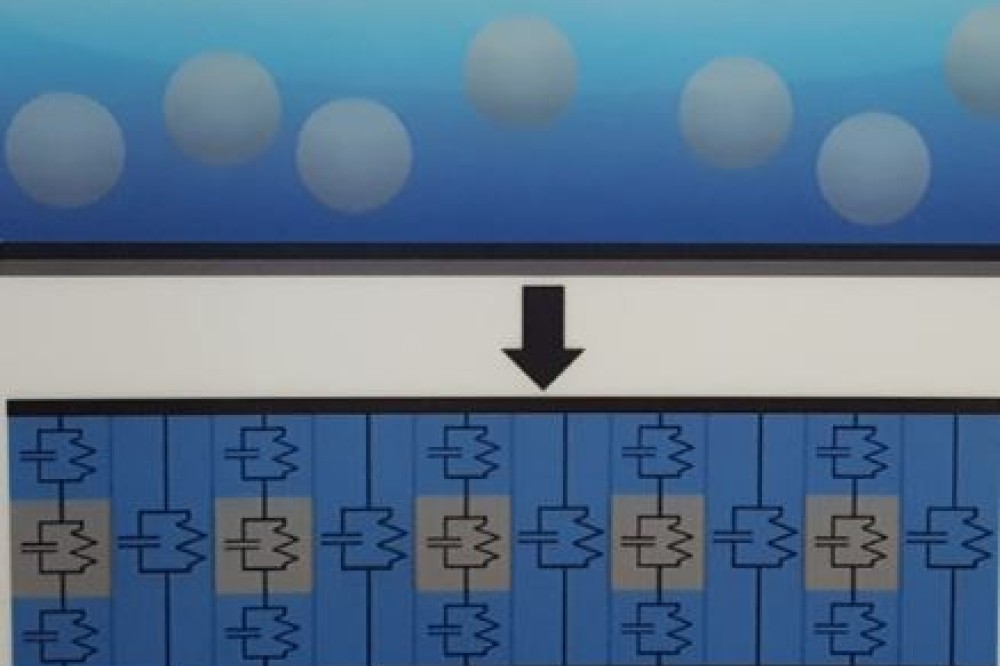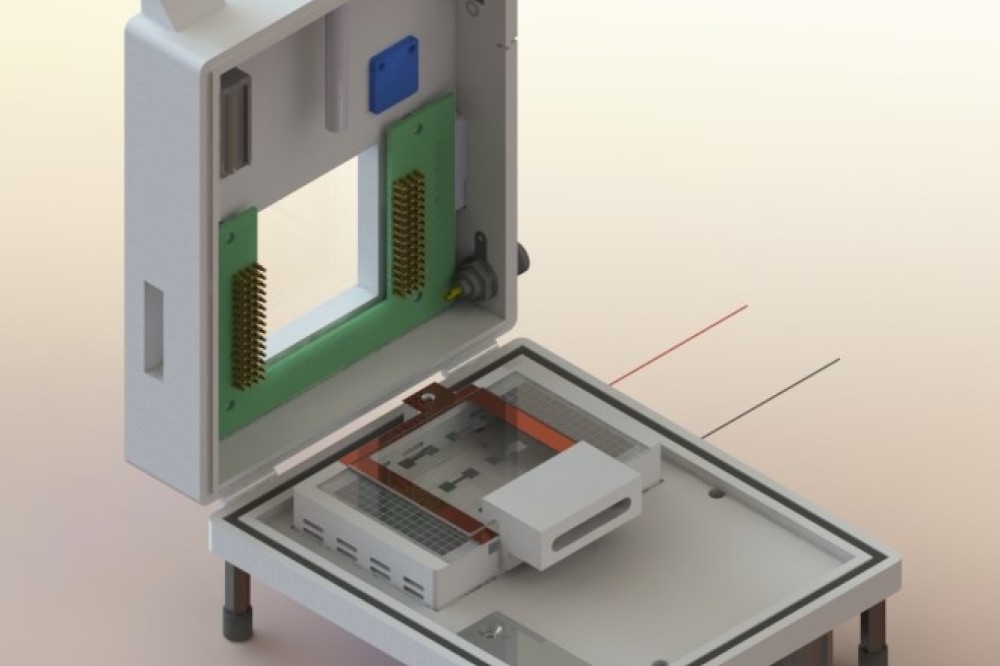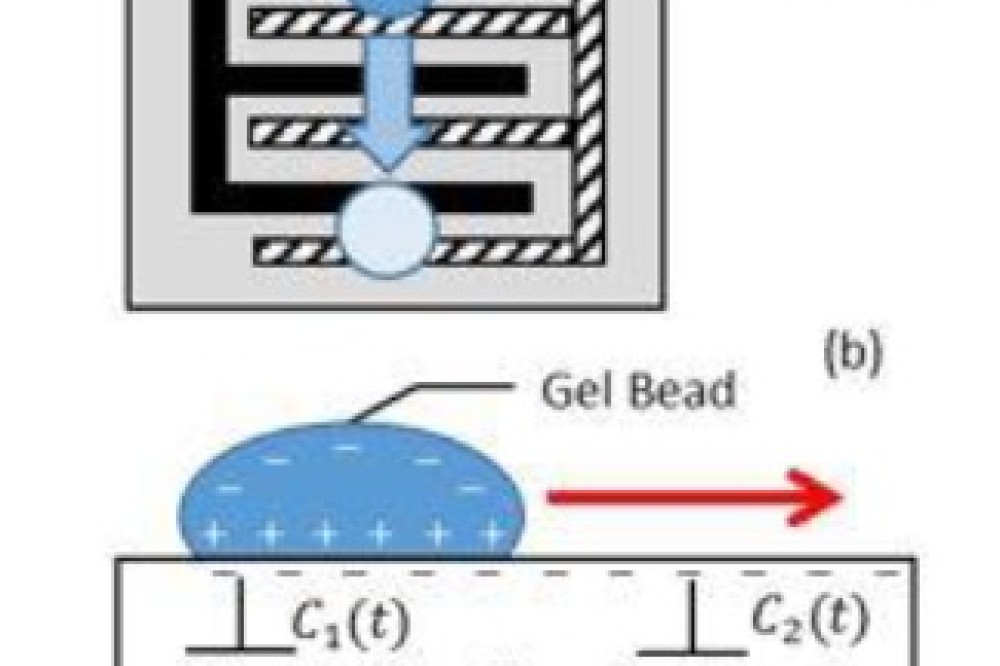Research
- RIT/
- Discrete Microfluidics Laboratory/
- Research
Colloidal Deposition
In a typical water droplet, an outward evaporative flow carries material to the edge and deposits it in a "coffee-ring" pattern. This is problematic in printing operations where a uniform coating of ink is desirable, such as in the fabrication of flexible electronics. To produce such a device, a fluid containing suspended metallic particles in printed onto a flexible substrate to create the device circuitry. Inconsistencies in the coating can alter the intended electrical path and result in short or open circuits which could potentially damage the device when used. Coffee rings are also problematic in medical diagnostic testing. In some tests such as part of a pathogen detection, a gene sequencing, or an enzyme-linked immunosorbent assay (ELISA), thousands of droplets containing different proteins or other target materials are allowed to dry on devices called microarrays. The depositions left behind are then scanned. Depending on where exactly in the deposition is scanned, the quantity of the target material differs and the test results can change.
Electrowetting on Dielectric
When a droplet rests on a surface, it takes a particular shape depending on the wettability of the surface. The droplet's contact angle is the angle, measured through the droplet itself, where the droplet interface meets the surface. Interestingly, by applying an electrical field a droplet the interface shape can be distorted. The apparent contact angle reduces and the droplet appears to wet the surface more than before the field was applied. This occurs due the the electrical field applying an additional force on the contact line of the droplet. This not only affects the droplet's contact line dynamics, but it can also change the internal flows of the droplet as it dries and can influence any suspended particles. Through the use of electrical fields, we hope to develop a means of deposition control in drying colloidal droplets.
Colloidal Deposition Collaborators

Dr. Kara Maki, RIT

Dr. Pierre Sullivan, UofT

Dr. Ridha Ben-Mrad, UofT

Dr. Peter Lea, SQI Diagnostics
Lab-on-a-Chip
Lab-on-a-Chip devices are an emerging technology that seek to replace all of the equipment of traditional laboratory with single devices the size of a credit card. Often, these devices are microfluidic in nature, leveraging the improved mass transport and relative strength of surface tensions forces at small scales. Current digital microfluidic devices (DMFs) are capable of moving, splitting, mixing, and filtering operations with droplets of different fluids. Some are even already capable of performing medical tests, such as enzyme-linked immunosorbent assays (ELISAs). These types of devices have the potential to outperform traditional laboratory equipment in several regards. They can be fabricated faster and cheaper, require less reagent material to operate, operate faster, and are highly compact. These attributes make them ideal for use in remote or impoverished areas where no traditional laboratory access is available.
Real-Time Feedback
It would be ideal to know as much about the processes occuring within the working fluid of microfluidic devices as quickly as possible. We are currently developing a universal method for device feedback using capacitive sensing.
Digital Microfluidics Control System
Traditional control systems for digital microfluidic (DMF) systems can cost tens of thousands of dollars. Our aim is to produce a more affordable system still capable of integrating with a DMF device and manipulating droplets. Using open-source software and using custom-built subsystems rather than expensive off-the-shelf products, we hope to accomplish this on a budget closer to $1,000.
This area was spearheaded by a multidisciplinary team of senior engineering students as part of RIT's Senior Design program.
Digital Microfluidics Environmental Enclosure
The ambient environment can have a significant impact on droplet behavior in a digital microfluidic (DMF) device. The use of an enclosure around an operating DMF device would not only shield the test from contaminants, but it could also regulate the temperature and humidity the working fluid experiences. We hope that by limiting the influence of foreign debris as well as controlling environmental variables we can improve the reliability of DMF devices.
This area was spearheaded by a multidisciplinary team of senior engineering students as part of RIT's Senior Design program.




Dr. Kara Maki, RIT

Dr. Pierre Sullivan, UofT

Dr. Ridha Ben-Mrad, UofT

Dr. Peter Lea, SQI Diagnostics
Energy Harvesting
Even in today's increasingly advanced technologies, nothing is 100% energy efficient. The chemical energy put into a car, for example, is lost through friction at the tires, heat in the engine, drag on the body, and several other means. Energy harvesters are devices that seek to collect a portion of that energy that would otherwise be wasted so that it can be used once again. In our lab we focus on electrostatic energy harvesters in particular. This type of energy harvester converts kinetic energy, the energy of motion, into electrical energy. In particular, we focus on electrostatic energy harvesters consisting of a charged bead rolling over a series of interdigitated electrode fingers. As the bead passes along the different fingers, the capacitance between the two sets of electrodes changes. This change in capacitance produces a voltage which can be used to operate a connected device. This type of harvester could potentially be implemented to power sensors in vibrating environemnts, such as rotating tires.
Polymer Gel Beads
One issue with this type of electrostatic energy harvesters is the rolling bead used. Initially, mercury droplets were used in this setup due to their advantageous conductivity. In more recent times, researchers have developed ionic liquid marbles to replace mercury due to its dangers as a neurotixin. These marbles consist of a core of an ionic liquid encapsulated in a plastic coating. Unfortunately, these marbles are not as conductive as mercury and do not perform as well in the energy harvester. In an effort to overcome the limitations of the ionic liquid marbles, one of our current goals is to develop a new polymer gel bead alternative that is more conductive for use in the energy harvester.


Energy Harvesting Collaborators

Dr. Patricia Iglesias, RIT

Dr. Thomas Smith, RIT

Dr. Casey Miller, RIT